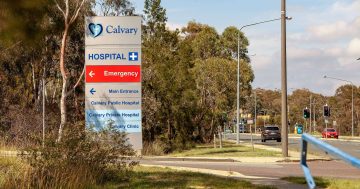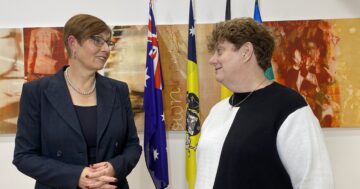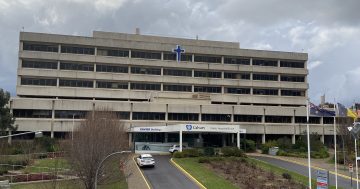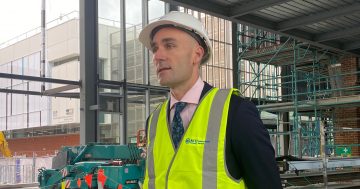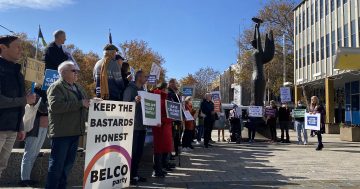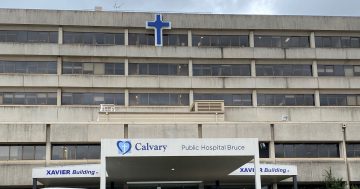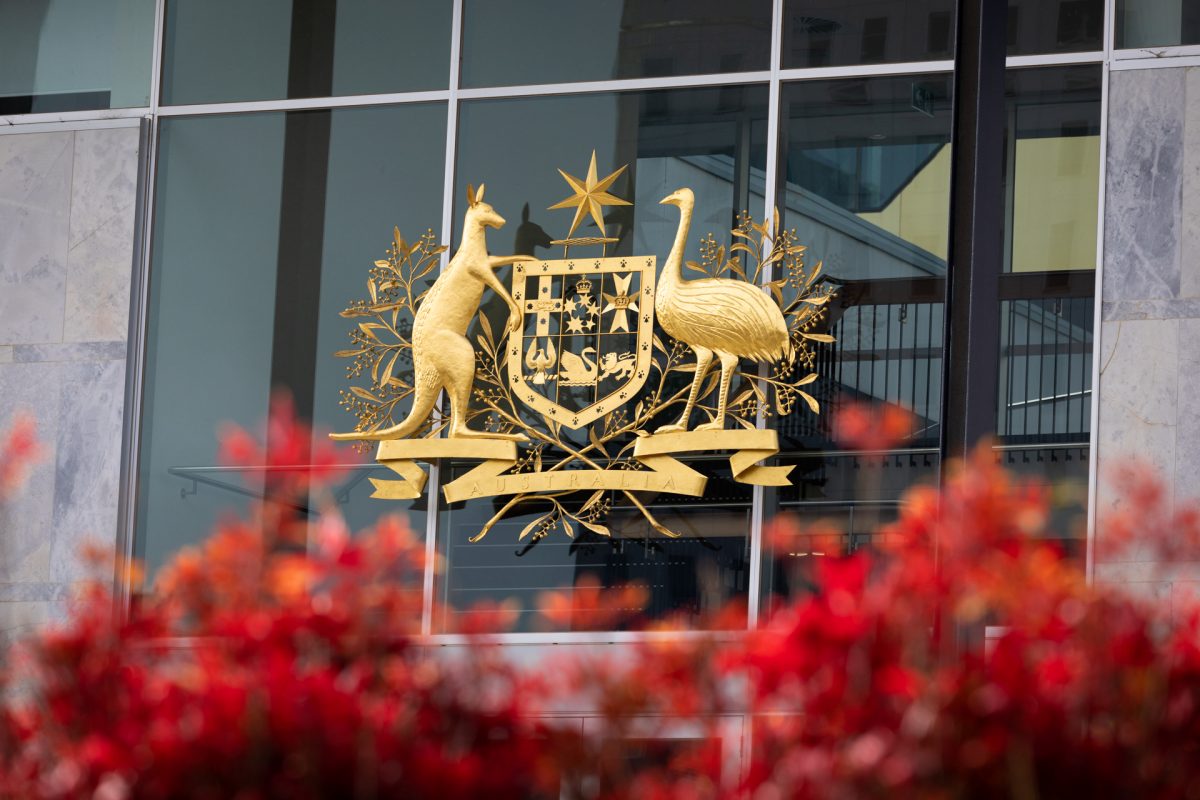
The ACT’s Chief Justice will hear submissions on whether an injunction will be placed on the government’s acquisition of Calvary Public Hospital Bruce. Photo: Michelle Kroll.
Lawyers for Calvary Health Care and the ACT Government will have a full day in the Supreme Court to argue over whether an injunction can be granted to hold up the compulsory acquisition of the public hospital in Bruce.
The head of the northside transition team isn’t worried this will hold up the process, which is slated to be finalised by 3 July.
Representatives for Calvary Health Care applied for a hearing with Chief Justice Lucy McCallum on Thursday (1 June), less than 24 hours after the bill allowing for the acquisition passed the Legislative Assembly.
However, because the legislation is yet to be enacted (ie, notified), it technically doesn’t exist.
“This application [by Calvary Health Care] is premature because the proposed law is not yet an enactment,” the government’s legal counsel Nigel Oram submitted.
“Until such time, it is only a proposed law.”
The legislation is expected to be notified tomorrow (2 June).
Chief Justice McCallum conceded she couldn’t make an order “restraining something that doesn’t exist”, but she also recognised the need to deal with the issue in a timely matter, given the acquisition date has been set down for 3 July.
“[The application] is premature today but becomes critically urgent tomorrow,” she said.
“It is very tight. I know that is imperative on the respondent’s own legislation.”
Submissions regarding the potential injunction will be heard on Wednesday (7 June).
An ACT Government spokesperson welcomed the fact the matter could be heard quickly and said the Territory had decided to hold off exercising “some powers” until next week.
“These powers are those under sections 11 and 12 of the Act or requiring Calvary to perform any of its obligations under sections 11, 12 and 13 of the Act. This means, for example, that we have agreed to not enter the land at Calvary for the purposes of transition,” they said.
“The Transition Team will continue planning for transition and will continue to talk to staff who want to engage with us, just as we have been since the northside hospital decision was announced.”
In a statement, Calvary Health Care acknowledged the Territory’s promise not to enact those powers, which meant it was unnecessary for its legal representatives to push forward with the injunction on that day.
“This means it is business as usual at Calvary Public Hospital Bruce until Wednesday next week, and the Territory cannot exercise any rights to enter hospital land, require information from Calvary or otherwise require Calvary to cooperate with it to effect any transition of the public hospital from Calvary to the Territory up to and including the final hearing date,” the statement read.
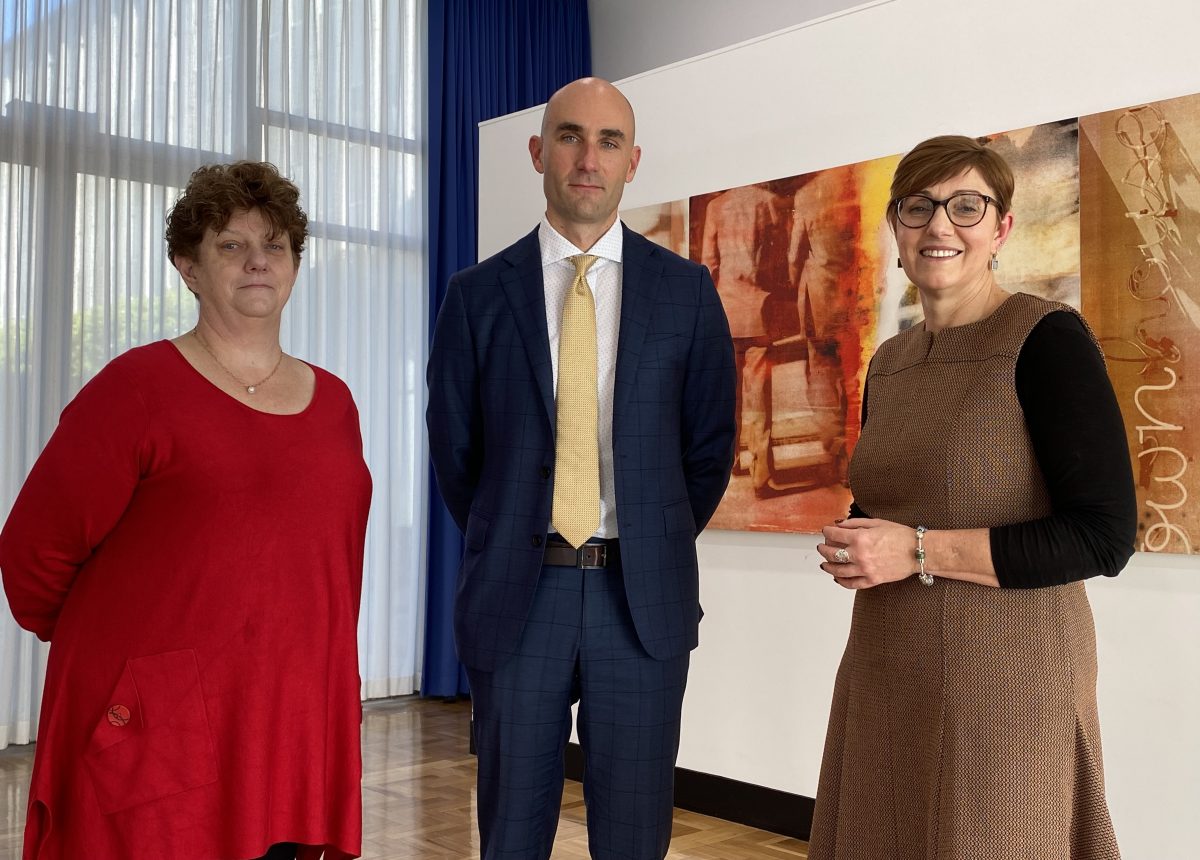
Northside Hospital Transition Team head Cathie O’Neill, CHS CEO Dave Peffer and Health Minister Rachel Stephen-Smith are confident the acquisition will be completed by 3 July. Photo: Claire Fenwicke.
The legislation requires the government to develop a transition plan in collaboration with a nominated executive from Calvary.
Northside Hospital Transition Team deputy director general Cathie O’Neill said as far as she was aware, Calvary still hadn’t filled that position.
“Until we have those conversations with that relevant executive, we won’t firm up that final plan,” she said.
“This is not about doing to them; it is about doing with them.”
With uncertainty about whether an injunction will be granted, Ms O’Neill said they had a number of game plans to consider to ensure the critical elements were transitioned across so the public hospital could continue to function as normal.
“We have done a lot of planning from worst-case scenario where we either have no time or no cooperation, right through to best-case scenarios,” she said.
“At the moment, we feel we have enough safeguards and contingencies in place to actually be able to meet that transition day.
“But if we need to reassess that, that’s what we’ll do.”
Those critical elements included transitioning contracts so staff would be on the correct payroll and gaining access to non-clinical ICT systems such as security.
“I think it’s really important for people to understand we’re not going in to take over the hospital. We’re not starting up the hospital from scratch. We are transitioning the existing workforce under a new owner if you like,” Ms O’Neill said.
“So we intend to keep all their processes, as much as possible, the same as they are today.”
The legislation does provide wriggle room for employees to be transitioned after the acquisition date.
Ms O’Neill also stressed there would be no job losses as a result of the transition.
“What we’re hearing pretty clearly from the teams that we have managed to speak with at the information sessions we’ve been running is that the teams at Calvary are running pretty lean, so this is not about downsizing them,” she said.
“The same amount of work will be there. We expect those teams to stay and to continue to work with us to do that work.”
One thing that will change immediately after the transition is that some restrictions on the care provided at Calvary Public Hospital Bruce will be removed.
“[For example] women who have a caesarean section when they’re having a baby at the Centenary Hospital for Women and Children can choose to have a tubal ligation done at the same time. That is not an option that’s available to them at Calvary Public Hospital,” Health Minister Rachel Stephen-Smith said.
“So those kinds of changes will take place pretty quickly following the transition.”
Canberra Health Services CEO Dave Peffer said the status quo would remain the same for the rest of the year.
“I won’t be moving to change anything until I’m confident we’ve got the building blocks in place, that we have people being paid correctly, that we’ve got access to all of the business systems that we need to provide that safe care on a continued basis,” he said.
“But in the months ahead, and once we’ve got those basics in place, we will move to invite teams and departments from either side of the lake to come together and start shaping the future of their services to the benefit of the Territory.”












